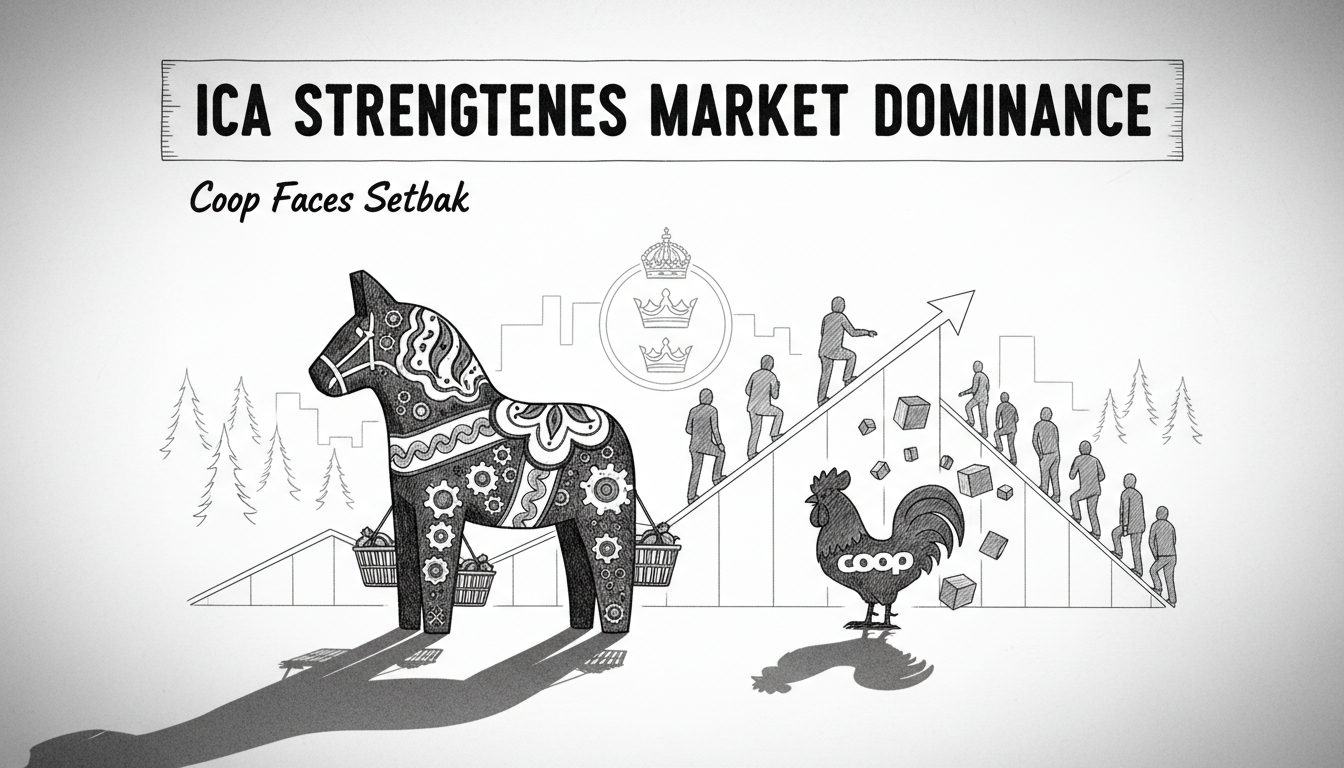Sweden's grocery giant ICA has reclaimed over 50 percent of the national market share. The retailer achieved this milestone after losing ground during recent inflation spikes. New strategic approaches helped drive this recovery according to industry experts.
The past few years brought turbulent times for both households and major food retailers. When food prices surged dramatically during 2022 and 2023, Swedish consumers turned to discount alternatives like Willys and Lidl. Many shoppers moved away from ICA during this period. But the company successfully attracted customers back throughout this year.
Industry organization Dagligvaruleverantörerna's latest market analysis confirms ICA's regained position. The turnaround represents a significant achievement in Sweden's competitive grocery sector. Market dominance matters because it affects pricing power and supplier relationships.
Sweden's grocery market structure differs from many other countries. Three major chains dominate the landscape: ICA, Coop, and Axfood. Each operates through distinct business models and ownership structures. ICA functions as a cooperative of independent retailers, while Coop serves as a consumer-owned cooperative.
This market concentration means competitive shifts impact millions of Swedish consumers. When market leaders change strategies, price levels and product availability often follow. The recent inflation period tested customer loyalty across all major chains.
ICA's recovery suggests their response to economic pressures proved more effective than competitors' approaches. Their strategy apparently resonated with price-conscious shoppers while maintaining premium positioning. This balancing act represents a key challenge in modern grocery retail.
International readers should understand that Swedish grocery markets operate differently than in many countries. High concentration and distinct ownership models create unique competitive dynamics. Regulatory oversight remains active to prevent anti-competitive practices.
The regained market share positions ICA strongly for future expansion and negotiations. Suppliers typically prioritize relationships with dominant retailers. This could strengthen ICA's product selection and promotional capabilities in coming quarters.
What does this mean for Swedish consumers? Market concentration often correlates with higher prices, though competition from discount chains provides some counterbalance. The situation warrants monitoring by consumer protection authorities to ensure fair market conditions persist.
The grocery sector's evolution continues as consumer habits change post-inflation. Digital shopping and delivery services add another layer of competition. Traditional retailers must adapt to these new realities while maintaining physical store relevance.

